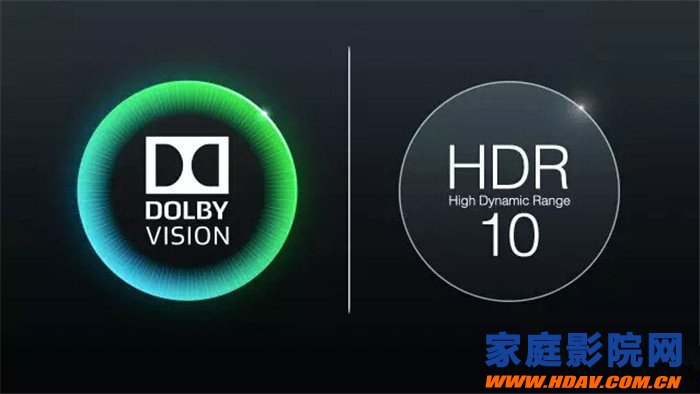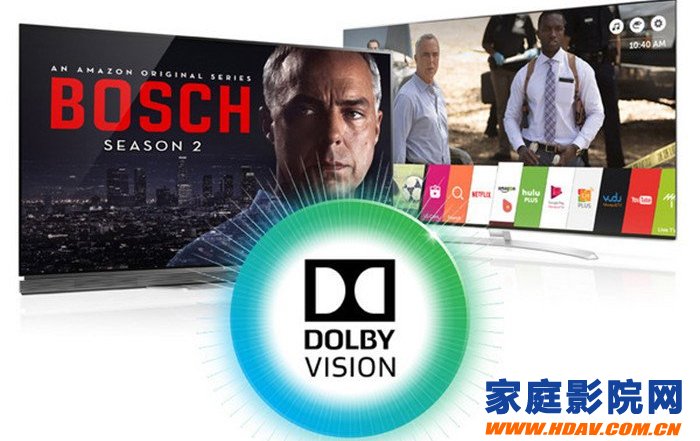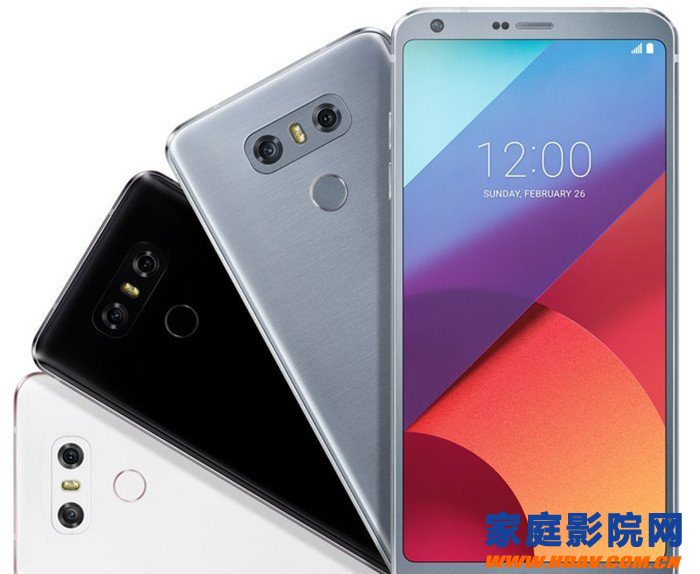[Home Theater Network HDAV.com.cn] Dolby Vision is another format of HDR, and in 2017 gained more attention and support from TV, tablet and mobile phone manufacturers. But what is Dolby Vision? How does it work? How do we use this format? This article will examine these issues in detail.
About HDR Dolby plays a very important role in commercial cinema and home theater applications. From the perspective of home entertainment, Dolby's most important contribution is the HDR of this advanced format, which is Dolby Vision.
Dolby Vision can continuously optimize the way TV delivers HDR images to improve the consumer's viewing experience. At the same time, it gives the content manufacturers more control - they can decide how HDR shows appear on TV. And, Dolby Vision will also spread to smartphones and tablet devices.
Until CES 2017, it was widely believed that Dolby Vision's hardware (screen and UHD Blu-ray player) needed to carry a dedicated chip. In fact, for those devices with powerful processors, it is now possible to add support for Dolby Vision through firmware upgrades.
The industry-standard HDR10 format is available for free use by vendors, but Dolby Vision requires a license fee. So what's so special about Dolby's vision that hardware vendors and consumers need to pay extra for it? In fact, Dolby Vision does have its own uniqueness.

1. What is Dolby Vision?
Compared to HDR10, the significant advantage of Dolby HDR is the addition of dynamic metadata to its core HDR image data.
These metadata carry instructions for each scene. Devices that support Dolby Vision use this command to ensure that content is presented as accurately as possible. The TV supporting Dolby Vision combines the information of each scene received, each with its own brightness, contrast and color performance.
When using HDR10 content, the HDR TV only receives static metadata, showing the entire content of the movie or TV relative to the underlying "global" content information.
HDR10 is not able to provide updates to the display - how each particular lens or scene is displayed, and there is no equivalent device to continually optimize the image displayed on the screen.
The core of Dolby Vision is the same as HDR10, which means content manufacturers can more easily create content that supports HDR10 and Dolby Vision, which means that Dolby Vision UHD Blu-ray can also support HDR10 only. Play on the TV.
The Dolby Vision allows content manufacturers to have one or two data "layers"; one carries only HDR signals and the other carries standard dynamic range (SDR) signals. A single HDR/SDR workflow approach makes Dolby Vision a convenient tool for content creators and broadcasters.
Another advantage of Dolby Vision is that metadata is embedded in the video signal, which means it can run on "traditional" HDR connections earlier than 1.4b. And although HDR10 only uses static metadata, HDMI 2.0a is still needed.
From a content output perspective, Dolby Vision seems to be more focused on pushing HDR to its technical limits. Dolby Vision's lowest specification requires a reference-level display – 200,000:1 contrast ratio, 1000 nits peak brightness, color gamut close to the Rec 2020 standard, and support for the SMPTE ST-2084 HDR format.
In addition, Dolby has developed a reference-grade Pulsar display that offers a contrast ratio of 800,000:1, a peak brightness of 4000 nits, and a so-called P3 color gamut for digital cinema applications.
Given its greater creativity and the drive for higher brightness in consumer TV (Samsung claims that the TV in 2017 will reach 2000 nits), we believe that higher performance products will be available soon.

2. Can Dolby Vision provide better picture quality?
At the moment, although everyone’s experience with Dolby is limited to Netflix, some of the content on Amazon’s streaming media, and some Dolby Vision movie clips on LG Dolby TV, the initial impression is that Dolby Vision The effect is better.
In the confrontation between Dolby Vision and HDR10, Dolby Vision's image seems to be superior in the processing of bright areas. The colors are more balanced, natural, and the nuances are more vivid; better contrast range management; and better detail – this may be the result of improved color and brightness management.
We look forward to a more comprehensive review of the various HDR videos in the next year, when the hardware and software markets are more mature.

3. Where can I see the Dolby Vision?
LG's various LCD and OLED TVs launched in 2016, as well as OLED TVs launched in 2017, support Dolby Vision, and its UP970 4K Blu-ray player also supports Dolby Vision.
Loewe also announced that it will launch its first OLED TV that supports the first Dolby Vision; it also confirms that the OPPO UDP-203 Blu-ray player will support Dolby Vision through firmware updates next month.
Sony announced that its 2017 high-end TV (including its A1 OLED) will also support Dolby Vision, and its 2016 ZD9 LCD TV will also be supported.
In addition, Google Chromecast Ultra also supports Dolby Vision. In the US, Vizio, Hisense, LeEco, Philips (not the same as Philips in Europe) and TCL already have a TV that supports Dolby Vision for sale or will be released soon.
Philips also launched a UHD Blu-ray player that supports Dolby Vision.
Although Dolby has been adopted by many TV manufacturers. However, there are still some hardware manufacturers that do not currently have any products that support Dolby Vision, the most important of which are Samsung and Panasonic. Perhaps it is considering that licensing fees will increase their production costs, which may increase their resistance.
Both companies expressed their belief in the handling of their products and the performance of their own hardware. They believe that their optimized HDR10 images are good enough even without Dolby Vision.
But this does not take into account that content manufacturers may increasingly invest in Dolby Vision.
Samsung and Panasonic have already obtained excellent HDR images from HDR10. We can't help wondering whether to play Dolby Vision and HDR10 content on Samsung or Panasonic TV. Which image quality is better?
It is worth noting that Samsung is currently proposing a free dynamic metadata HDR system of their own.

4. What content is currently available to support Dolby Vision
There are currently no UHD Blu-ray discs on the market that support Dolby Vision. However, Lionsgate, Sony, Universal and Warners are committed to launching the UHD Blu-ray release of Dolby Vision in 2017, although no definitive information has been published.
The streaming media field seems to be developing faster. In the UK, both Netflix and Amazon support Dolby Horizon HDR content streams, which are also supported in the US VUDU.
The upcoming PC game Mass Effect: Andromeda will support Dolby Vision, heralding a new gaming journey.
Dolby Vision can also be applied to live broadcasts - although no production company has tried it yet. In the HDR 4K program, another format, HLG, occupies the main position.

5. Dolby Vision's application on smartphones
At the Mobile World Congress in February, LG launched the G6, the first smartphone with Dolby Vision (also including HDR10). This means you can watch video content with HDR technology on your mobile phone or bus.
The G6 has a 5.7-inch FullVision display. Through actual operation, we found the display to be quite sharp and clear, although there will be some controversy – because everyone is used to watching the movie with rounded corners on the screen.
At present, no other mobile phones have announced their support for Dolby Vision. Both LG and Dolby stressed that G6 is the first one, so we can only assume that more products are still on the road and there is still a lot of room for development.

6. What is the development prospect of Dolby Vision?
Dolby positions its technology as a "value added" associated with HDR10, rather than a direct competitor. In order to avoid the so-called "format war".
The essence of Dolby Vision is: "Beneficial complement" on the HDR10 core, so you can ensure that only HDR10 devices are supported, and Dolby Vision content is also compatible.
For content manufacturers, they are not required to provide content that supports both HDR10 and Dolby Vision. The US streaming media platform VUDU did not initially support HDR10 and Dolby Vision, and Vizio did not have Dolby Vision TV at first.
Both now support HDR10, and the Dolby Vision platform also supports HDR10. There is no doubt that the current HDR road is not all the way, especially with HLG (HDR format for broadcast TV) and Technicolor's recently announced Advanced HDR.
When new formats and standards emerge, you may be confused, but don't worry, there will always be people who will help you analyze the terms of these oysters.
More fresh and fun home theater information, please pay attention to home theater network http:// (WeChat: cnhifi), the country's most influential home theater audio player interactive media website.
An electric slip ring is a rotary electrical connector. It allows uninterrupted power or signal transfer between two stationary points. It is also known as an electric Rotary Joint, power swivel, or electrical rotary joint. Electric slip rings are usually composed of a metal ring with several brush contacts on the inner circumference. And there are one or more pairs of contacts for power or signals on the outer circumference. The metal ring can be rigid or flexible, depending on the application.
An electric slip ring is an electromechanical device that allows the transmission of electrical power and signals from a stationary to a rotating structure. It consists of an electrically conductive rotating disc or ring, with a number of electrical contacts (or "slots") on its surface. The contacts are connected to external circuits, enabling the passage of power and/or data from the stationary to the rotating structure. Slip rings are also used in generators, where they allow the passage of current from the rotor to the stator.
A flat disc electrical slip ring is one kind of electric slip ring, it has many advantages: simple construction, small size, low cost, easy installation, and maintenance. It is widely used in various fields such as machine tools, textile machinery, printing machinery, packaging machinery, medical equipment, and aerospace equipment.
A 360-degree rotating Conductive Slip Ring is also called a hollow shaft slip ring or hollow conduct. It has an opening in the center that allows a shaft to pass through, making it ideal for rotating applications. Slip rings are often used in medical equipment, robotics, and manufacturing assemblies where rotation is required. This type of slip ring can handle large currents and voltages while providing a continuous electrical connection.
Electric Slip Ring,Slip Rings In Generator,Flat Disc Electrical Slip Ring,Slip Ring Electric Motor
Dongguan Oubaibo Technology Co., Ltd. , https://www.sliprobo.com
